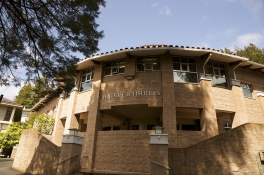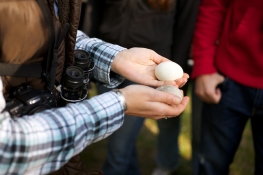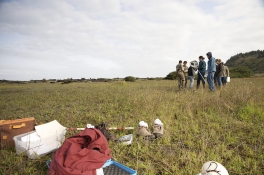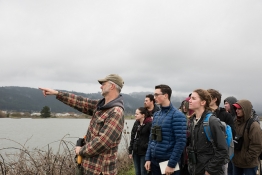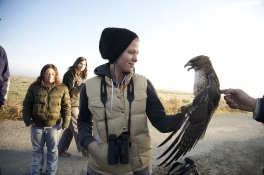Hawaiian goose conservation biology and reintroduction science
A study of the "whole" animal and its environment, including: population genetics and dynamics, modelling population viability, feeding ecology (plant-animal interactions), mate choice, dispersal, and the ontogeny of predator responses. This project uncovered a series of potential reasons for the continued need for remedial management action and has encouraged managers to implement recommendations.
We uncovered six limiting factors that are likely to be still affecting recovery of the species; there is scope for
- maximising genetic diversity in wild flocks through strategic translocations of eggs and adults
- training captive-reared goslings in predator avoidance skills prior to release
- intensive habitat management to enable the acquisition of adequate fat and nutrient reserves
- intensive predator control
- community education
- further financial and community support
There are approximately 4,000 Hawaiian Geese in the wild today (estimates in 2023). Future studies could include Population Viability Analyses, social aspects of foraging ecology and distribution, gosling diet deficiencies, and cultural transmission of habitat shifts and local movements.
Nene Recovery Initiative Publications
Black JM 1995. The Nene recovery initiative: research against extinction. Ibis 137, S153-S160.
Black JM & Banko PC 2005. Hawaiian goose Branta sandvicensis. In: Ducks, geese and swans of the world, Ed. J. Kear. Oxford University Press; 316-321.
Hoshide, H. M., A. J. Price, and L. Katahira. 1990. A progress report on Nene Branta sandvicensis in Hawaii Volcanoes National Park from 1974-89. Wildfowl 41: 152-155.
Revised Recovery Plan by US Fish & Wildlife Service
USFWS 2004. Draft revised recovery plan for the Nene or Hawaiian goose (Branta sandvicensis).
Other Publications and Major Reports
- Black JM 1990. The Nene Recovery Initiative. WWT report to Hawaiian Division of Fisheries & Wildlife. pp. 42.
- Black JM & Marshall AP 1992. Hawaii's state bird at risk. Wildfowl & Wetlands 106, 20-23.
- Black JM, Marshall AP & A Gilburn 1993. Survival, movements and reproductive success of released Hawaiian geese: an assessment after thirty-year. WWT report to Hawaiian Division of Fisheries & Wildlife. pp. 37.
- Black JM, Prop J, Hunter J, Woog F, Marshall AP and Bowler JM 1993. Foraging performance of Hawaiian Geese. WWT report to Hawaiian Division of Fisheries & Wildlife. pp. 80.

